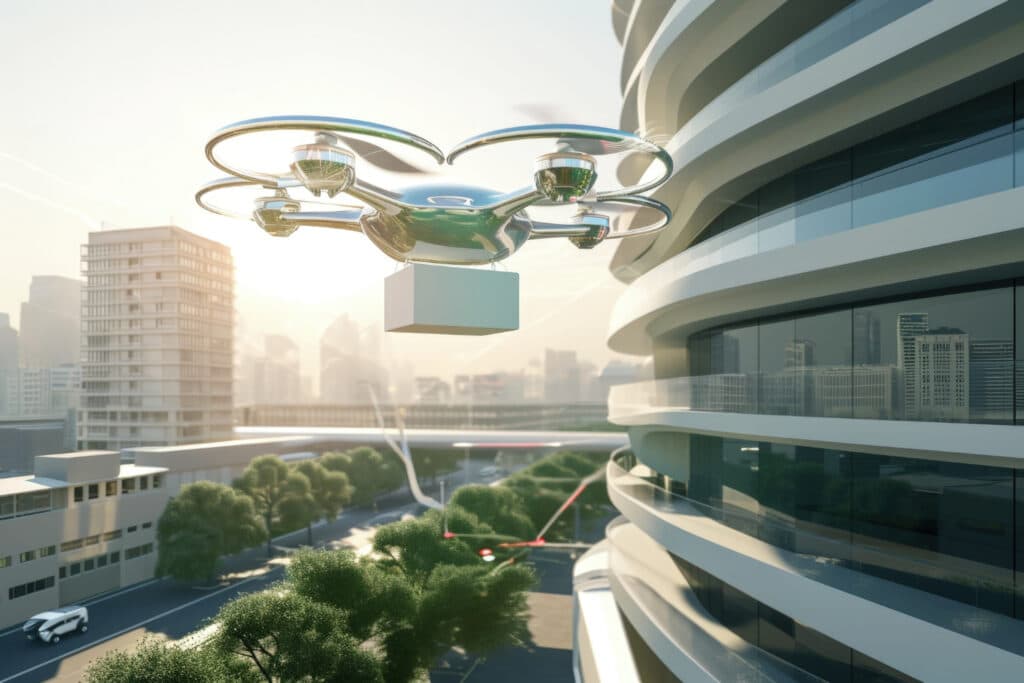Drone delivery programs scale in rural logistics

Drone delivery programs are transforming rural logistics by providing faster, more efficient delivery solutions to remote areas, overcoming traditional transportation challenges through advanced technology and improved accessibility.
Drone delivery programs are changing the landscape of logistics in rural areas. Imagine getting your packages delivered right to your doorstep without delays. Curious about how this works? Let’s explore this innovative approach.
Understanding drone delivery systems
Understanding drone delivery systems is essential as these innovations become a vital part of logistics, especially in rural areas. With their ability to navigate difficult terrains and reach remote locations, drones offer a promising solution to long-standing delivery challenges.
Many people wonder how these systems work and what makes them so effective. The key components include the drone itself, the delivery package, and the navigation technology. Each plays a crucial role in ensuring that deliveries are successful and efficient.
Key Features of Drone Delivery Systems
Drones used for delivery are equipped with advanced technology. This technology allows them to avoid obstacles and find the best routes. Here are some key features:
- GPS Navigation: Drones rely on GPS to determine their location and direction.
- Obstacle Avoidance: Sensors help drones detect and avoid trees, buildings, and other obstacles.
- Automated Landing: Drones can land themselves at precise locations, making deliveries safe.
These features help make drone delivery a reliable and quick method of transportation. Moreover, improvements in battery life and load capacity are continually enhancing their performance. With better batteries, drones can fly longer distances and carry heavier packages.
In addition to technology, regulations also play a vital role in the operation of drone delivery systems. Governments are developing guidelines to ensure safety and privacy. This is crucial for maintaining public trust in new technologies.
Overall, understanding these aspects of drone delivery systems sheds light on their potential impact on logistics. They present a new way to approach deliveries, particularly in areas where traditional methods face difficulties.
Benefits of drone logistics in rural areas

The benefits of drone logistics in rural areas are significant, especially as these regions often face delivery challenges. With limited access to traditional transportation networks, drones offer a groundbreaking solution. They can bridge the gap, ensuring that essential goods reach people who need them.
Drones provide speed and efficiency, making deliveries faster than traditional methods. For instance, a drone can fly directly to a location without the need for roads, which means shorter delivery times. This is especially important for urgent deliveries, such as medical supplies, which can save lives.
Improved Accessibility
Another benefit is improved accessibility. Remote communities frequently struggle with logistics due to difficult terrains or a lack of transportation options. Drones can access these areas easily, providing services that were previously unavailable. This can lead to better availability of products like groceries and household items.
- Cost-Effective Solutions: Using drones can reduce delivery costs compared to traditional vehicles.
- Green Technology: Drones produce fewer emissions than trucks, benefiting the environment.
- Real-Time Tracking: Users can track their deliveries, enhancing transparency and trust.
Furthermore, drone logistics can stimulate local economies. By enabling local businesses to expand their reach, these systems help create jobs and boost trading opportunities. As more businesses adopt drone delivery, they will benefit from lower operating costs and the ability to serve customers more effectively.
Technological advancements also drive the effectiveness of drones. With improved battery life and payload capacities, they can now deliver larger items over greater distances. Additionally, advancements in navigation technology mean that drones can operate efficiently even in challenging weather conditions.
Challenges faced by drone delivery programs
The challenges faced by drone delivery programs are significant, especially as these systems are implemented in rural logistics. While drone technology offers numerous benefits, several hurdles must be addressed to ensure successful operations.
One primary challenge is regulatory compliance. Each country has its own set of rules regarding airspace use. Drones must operate within these rules to avoid penalties or grounding. The lack of uniform regulations can lead to confusion for companies trying to navigate the legal landscape.
Technical Limitations
Another challenge is related to the technology itself. Drones can experience technical malfunctions, such as battery failures or navigation errors. These issues can disrupt delivery schedules and create safety concerns. Additionally, operating in adverse weather conditions can further complicate drone flights.
- Limited Payload Capacity: Most drones have a limited weight capacity, which restricts the types of packages they can deliver.
- Battery Life: Drones often have a short flight duration, limiting their range and delivery frequency.
- Signal Loss: Occasionally, drones may lose connection with their operators, leading to lost packages or crashes.
Public perception is another hurdle to overcome. Many people are still skeptical about drones, fearing safety risks or privacy invasions. Building trust through transparency and education is essential for gaining community support.
Despite these challenges, continuous improvements in technology and regulations are paving the way for successful drone delivery programs. By addressing issues like safety, efficiency, and community concerns, companies can enhance their logistics operations.
Technological innovations shaping drone delivery

Technological innovations are crucial in shaping drone delivery services. As the demand for efficient logistics increases, new technologies enhance the capabilities and reliability of drone operations.
Advancements in navigation systems have improved how drones find their way. Many drones now use a combination of GPS and advanced sensors to navigate accurately. This helps them avoid obstacles like trees and buildings during deliveries.
Battery and Power Improvements
Battery technology is another area experiencing rapid growth. Modern drones are equipped with lighter and more efficient batteries. These innovations extend flight times and increase the distance a drone can travel. Longer battery life means that drones can complete more deliveries without needing to recharge, making them a practical option for rural areas.
- Hybrid Models: Some companies are developing hybrid drones that use both electric and fuel-based engines, providing greater flexibility and range.
- Solar-Powered Drones: Solar panels integrated into drones can help extend flight durations even further, promoting eco-friendly delivery solutions.
- Advanced Materials: New lightweight materials make drones more efficient and faster while carrying more payloads.
Moreover, the integration of artificial intelligence (AI) in drone technology is revolutionizing delivery services. AI can help drones process real-time data, allowing them to make smart decisions during flights. This includes adapting routes based on weather or other conditions.
Research and development are also focused on enhancing safety features. Many new drones come with built-in collision detection systems, which help prevent accidents and ensure safe deliveries. Additionally, these systems can automatically land if they encounter problems during a flight.
Future trends in rural logistics using drones
The future trends in rural logistics using drones are promising and could transform how goods are delivered. As technology evolves, we can expect significant advancements that will make drone delivery even more efficient and widespread.
One major trend is the increased use of autonomous drones that can operate without human intervention. These drones will rely on advanced AI systems to navigate and complete deliveries. This advancement could lead to cost savings and reduced labor needs.
Enhanced Delivery Networks
Another expected trend is the development of enhanced delivery networks. Various companies may collaborate to create a framework for sharing drone infrastructure. This will improve efficiency by allowing drones from different operators to use the same landing zones and charging stations.
- Micro-fulfillment Centers: More businesses may establish small distribution centers in rural areas. Drones can quickly deliver goods from these hubs to nearby customers.
- Real-Time Data Analytics: By utilizing analytics, companies can optimize routes and improve delivery times based on customer demand and inventory levels.
- Integration with Other Transport: Drones may work alongside vans and trucks to create hybrid delivery systems that combine speed and capacity.
Furthermore, advancements in battery technology and solar power will likely extend the range of drones. This means they can serve even more rural areas without frequent recharges, making deliveries more efficient.
Public acceptance will also shape future trends. As people become more familiar with drones, they may support their use more enthusiastically. Educational campaigns can help alleviate concerns about safety and privacy, paving the way for their broader adoption.
FAQ – Frequently Asked Questions about Drone Delivery Programs in Rural Logistics
What are the main benefits of using drones for delivery in rural areas?
Drones provide faster delivery times, improved accessibility to remote locations, and cost-effective logistics solutions.
How do drones navigate and avoid obstacles?
Drones use advanced GPS technology, sensors, and AI algorithms to navigate accurately and avoid obstacles during flights.
What challenges do drone delivery programs face?
Challenges include regulatory compliance, technical limitations, public perception, and ensuring safety and reliability.
What technological innovations are shaping the future of drone delivery?
Innovations include autonomous drones, improved battery technology, and real-time data analytics to enhance delivery efficiency.





